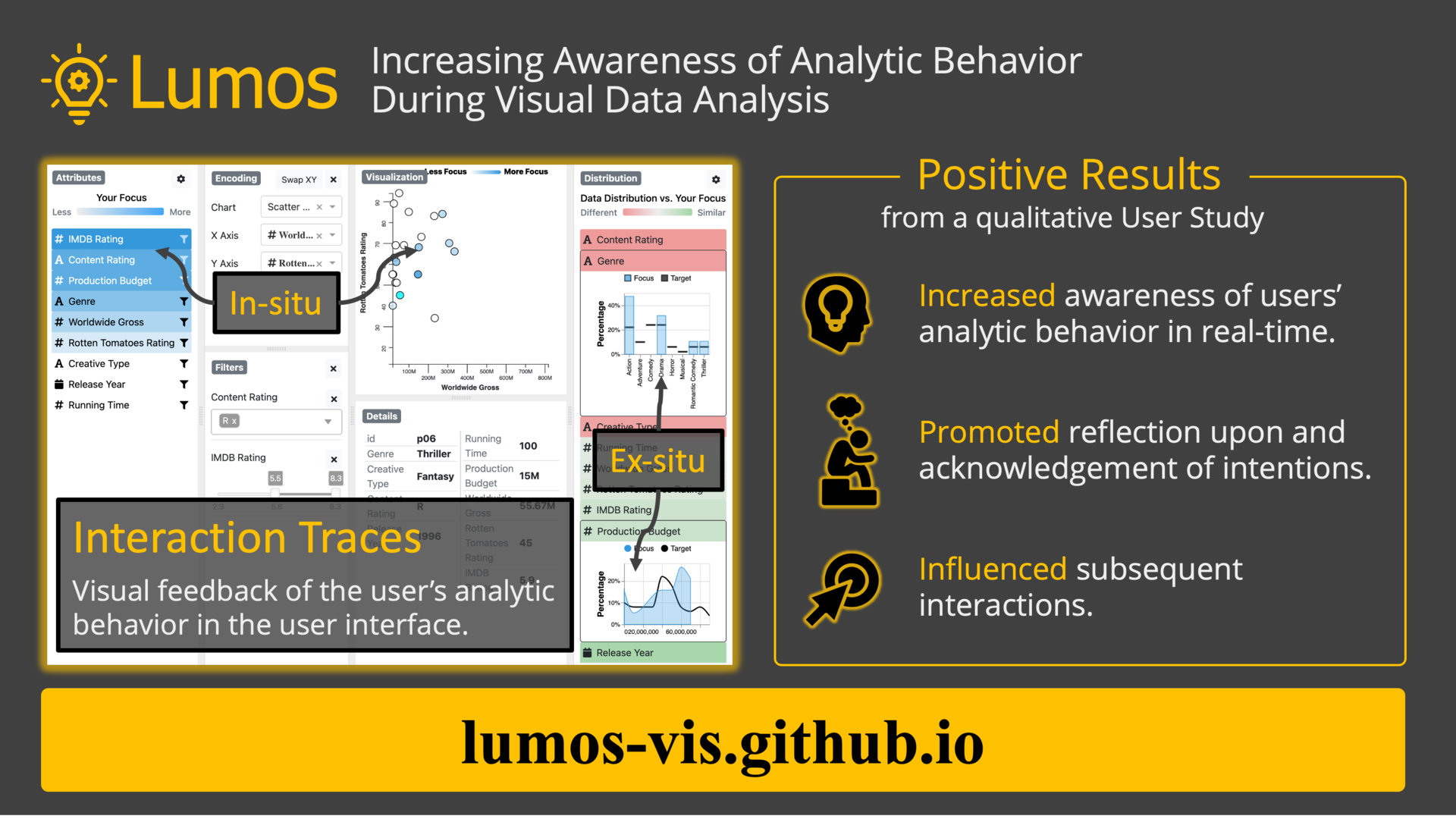Lumos: Increasing Awareness of Analytic Behavior during Visual Data Analysis
Arpit Narechania, Adam Coscia, Emily Wall, Alex Endert
External link (DOI)
View presentation:2021-10-28T18:15:00ZGMT-0600Change your timezone on the schedule page
2021-10-28T18:15:00Z

Fast forward
Direct link to video on YouTube: https://youtu.be/KKDiLrsTlLA
Abstract
Visual data analysis tools provide people with the agency and flexibility to explore data using a variety of interactive functionality. However, this flexibility may introduce potential consequences in situations where users unknowingly overemphasize or underemphasize specific subsets of the data or attribute space they are analyzing. For example, users may overemphasize specific attributes and/or their values (e.g., Gender is always encoded on the X axis), underemphasize others (e.g., Religion is never encoded), ignore a subset of the data (e.g., older people are filtered out), etc. In response, we present Lumos, a visual data analysis tool that captures and shows the interaction history with data to increase awareness of such analytic behaviors. Using in-situ (at the place of interaction) and ex-situ (in an external view) visualization techniques, Lumos provides real-time feedback to users for them to reflect on their activities. For example, Lumos highlights datapoints that have been previously examined in the same visualization (in-situ) and also overlays them on the underlying data distribution (i.e., baseline distribution) in a separate visualization (ex-situ). Through a user study with 24 participants, we investigate how Lumos helps users' data exploration and decision-making processes. We found that Lumos increases users' awareness of visual data analysis practices in real-time, promoting reflection upon and acknowledgement of their intentions and potentially influencing subsequent interactions.